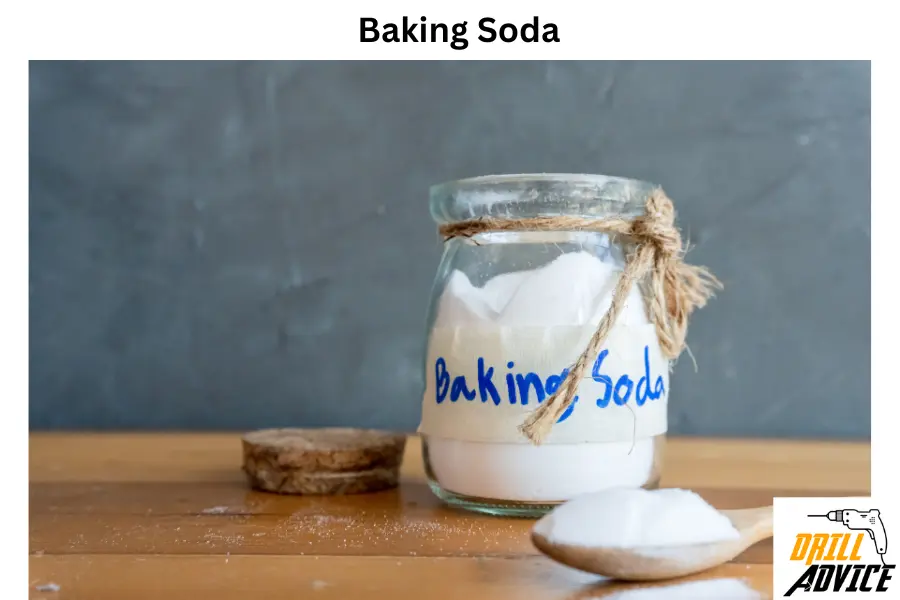
Cooking odour in the kitchen is the various smells or fragrances that are released when food is being prepared or cooked. These odours can range from the tantalizing aroma of freshly baked bread to the pungent scent of frying garlic or fish. The nature and strength of the odour depend on the ingredients being used, the cooking method, and the duration of cooking.
Cooking odors can be pleasant or unpleasant. It can depend on personal preferences. The most common kitchen odors are onion and garlic, fried food, fish, spices, grilled or roast smell, baked goods, boiled or steamed vegetables, cheese, burnt food, coffee, alcohol and ethnic food.
The kitchen will be an unpleasant place When these odors remain in the kitchen after the cooking process. Hence these odors should be removed from the kitchen. Kitchen odors can be removed by using baking soda, white vinegar, lemons, coffee grounds, activated charcoal, essential oils, and simmering herbs and spices.
These odour removers should be applied or sprayed on the surface and then removed it from the surface. Each of the removers can be applied in different ways and methods. Before you apply odor removers, you should make sure that it is not damaged to the surface you are going to apply.
What are the Cooking Odors in the Kitchen?
Cooking odours are the distinct smells produced when food is cooked or prepared. These odours can be pleasant or unpleasant depending on personal preferences, the specific food, or the method of cooking. These are the 12 common types of cooking odours.
- Onions and Garlic: These are foundational ingredients in many dishes around the world. When sautéed, they release a pungent aroma.
- Fried Foods: The process of frying, whether it’s donuts, chicken, or potatoes, often produces a distinct oily or greasy smell.
- Fish: Fish has a very particular smell when it’s fresh, and this odour can intensify when it’s cooked, especially if it’s fried. Some people find the aroma pleasant, while others don’t.
- Spices: Cooking with spices like cumin, turmeric, curry, or fenugreek can release powerful and aromatic smells.
- Grilled or Roasted Meat: The Maillard reaction and caramelization that occur when meats are grilled or roasted produce a rich, mouth-watering aroma.
- Baked Goods: The scent of freshly baked bread, cookies, cakes, or pastries is often sweet and warm, evoking feelings of comfort.
- Boiled or Steamed Vegetables: Some vegetables, like broccoli, cabbage, or Brussels sprouts, can release a sulfurous smell when boiled or steamed.
- Cheese: When melted or baked, certain cheeses can produce a strong odour. For instance, blue cheese, Roquefort, or certain aged cheeses have particularly strong smells.
- Burnt Foods: Accidentally overcooking or burning food can produce a smoky and unpleasant odour.
- Coffee: Brewing coffee releases a rich and aromatic smell that many people find invigorating.
- Alcohol: Cooking with wine, beer, or spirits can release the alcohol’s scent, especially when it’s being reduced or burned off.
- Ethnic Foods: Different cuisines have signature odours. For instance, Korean kimchi, Indian curries, or certain fermented foods can have strong and distinct smells.
Read More About
- Kitchen Waste Management: Types, Collecting and Disposal
- Best 8 Ways to Remove Stain Marks in the Kitchen: Methods and Products
- 7 Types of Kitchens: Efficiency, Layout, Space, Storage, and Cost
What are the 7 Odor Removers for the Kitchen?
1. Baking Soda

Baking soda (sodium bicarbonate) is a natural and effective way to neutralize odour in the kitchen. It works by reacting with odor-causing molecules and neutralizing them. Baking soda helps to eliminate unpleasant cooking smell in the kitchen. Baking soda is a safe option that doesn’t release harmful chemicals into the air.
How to Use Baking Soda to Remove Odors in the Kitchen?
- Use Baking Soda as Air Freshener: Place an open container of baking soda on your kitchen countertop or near the cooking area.
- Use Baking Soda and Vinegar Spray: Mix baking soda with water and a small amount of vinegar to create a natural odour-neutralising spray..
- Use Baking Soda in Trash Bins: Sprinkle a layer of baking soda at the bottom of your trash bins or compost containers.
- Use Baking Soda on Carpets and Fabrics: If cooking odours have spread to your carpets or fabric-covered surfaces, you can sprinkle baking soda over them and let it sit for a while before vacuuming it up.
- Use Baking Soda in the Fridge: Place an open box of baking soda in your refrigerator to absorb any food odours that might be lingering inside.
- Use Baking Soda on Cutting Boards: If cooking odors are absorbed by your cutting boards, sprinkle baking soda on them and scrub gently with a damp cloth.
Remember, while baking soda is a safe and natural option, it’s important to avoid using excessive amounts, especially on surfaces that could scratch easily. Also, if you have any specific materials or surfaces in your kitchen that might react with baking soda, such as certain metals, it’s a good idea to do a small test first.
2. White Vinegar

White vinegar is a mild acid. White vinegar is another excellent natural option for neutralizing and eliminating odors in the kitchen. It works by breaking down and neutralizing odor molecules, thereby reducing or eliminating unpleasant smells. Vinegar is safe to use and doesn’t leave harmful residues behind, making it a useful tool for managing kitchen odors.
How to Use White Vinegar to Remove Cooking Odors in the Kitchen.
- Use Vinegar as Air Freshener: Mix equal parts of white vinegar and water in a spray bottle. Spritz the mixture into the air around your kitchen to help neutralize cooking odors.
- Use Vinegar Steam: Boil a mixture of water and a few tablespoons of white vinegar on the stove. The steam will help disperse the vinegar’s odor-neutralizing properties throughout the kitchen. This is particularly effective after cooking meals with strong odours.
- Use Vinegar Soaked Cloth: Soak a cloth in a mixture of vinegar and water, then wring it out well. Wave the damp cloth around the kitchen to help remove lingering odors from the air.
- Use Vinegar Cleaning Solution: Mix white vinegar with water and use it as a cleaning solution to wipe down surfaces in your kitchen. This can help remove odors that might have been absorbed by countertops, stovetops, and other surfaces.
- Use Vinegar in the Dishwasher: If your dishwasher has an empty cycle, you can place a cup of white vinegar on the top rack and run a hot water cycle. This will help clean the dishwasher and remove any odors from it.
- Use Vinegar in the Fridge: Just like with baking soda, placing an open container of white vinegar in your refrigerator can help absorb and neutralize food odours. Remember to replace it regularly.
- Spray Vinegar for Cutting Boards and Utensils: If cooking odors have absorbed into wooden cutting boards or utensils, wipe them down with a cloth dampened with vinegar and water.
White vinegar is a versatile and affordable option for dealing with cooking odors in your kitchen. It’s important to note that the initial vinegar smell will dissipate quickly, leaving behind a fresh and neutral scent.
3. Lemons

The citric acid in lemons can help break down and neutralize various odors in the kitchen. Lemons are a safe and natural option for combating kitchen odors.
How to Use Lemons to Remove Cooking Odors in the Kitchen?
- Use Lemon Air Freshener: Cut a lemon into halves or quarters and place them in a bowl of water. Allow the lemon-infused water to sit on your kitchen counter to naturally release a pleasant scent that will help mask and neutralize cooking odors in the kitchen.
- Use Lemon Steam: After cooking a meal with strong odors, boil a pot of water and add slices of lemon to it. As the water boils, the steam infused with lemon essence will help disperse throughout the kitchen, neutralizing lingering odors.
- Prepare Lemon Vinegar Cleaner: Combine lemon peels with white vinegar in a jar and let the mixture sit for a couple of weeks. This will create a natural citrus-infused vinegar that you can use as a cleaning solution. Dilute the mixture with water and use it to wipe down surfaces and remove odors in the kitchen.
- Use Lemon in Trash Disposal: If your kitchen trash disposal unit is causing unwanted smells, toss lemon peels down the disposal and run cold water while activating the disposal in the ktichen. The lemon oils will help clean and deodorize the unit.
- Use Lemon and Baking Soda Scrub: Create a paste by mixing lemon juice with baking soda. Use this paste to scrub cutting boards, countertops, or other surfaces that may have absorbed cooking odors. The abrasive action of the baking soda, along with the lemon’s properties, will help neutralize odors and clean the surfaces.
- Lemon-Scented Cleaning Spray: Mix lemon juice with water in a spray bottle. Use this mixture as a natural cleaning spray for surfaces, including countertops and appliances, to help combat odors in the kitchen..
- Place Lemon in the Dishwasher: Similar to the vinegar method, you can place lemon slices or peels in your dishwasher’s utensil compartment and run a hot water cycle to freshen up the dishwasher and remove odors.
Remember that lemon’s natural scent is pleasant and refreshing, and it works well to mask and neutralize cooking odors. However, if you’re using lemon on surfaces, be cautious with materials that might react to acids, such as marble or certain metals.
4. Coffee Grounds

Coffee grounds are known for their strong and aromatic scent. They can effectively absorb and neutralize a variety of odors in the kitchen. The porous nature of coffee grounds allows them to trap and mask unpleasant odors, leaving behind a more pleasant atmosphere in your kitchen.
How to Use Coffee Grounds to Remove Cooking Odors in the Kitchen?:
- Iuse Coffee Grounds Air Freshener: Place dry, used coffee grounds in a bowl or dish and set them on your kitchen counter. The coffee grounds will absorb and neutralize cooking odors over time, giving the air a subtle coffee aroma.
- Coffee Grounds Deodorizing Sachets: Fill small fabric sachets or pouches with dry coffee grounds and tie them off. Hang these sachets near areas where cooking odors are prevalent, such as over the stovetop or near the trash bins.
- Place Coffee Grounds in the Fridge: If your refrigerator is retaining food odors, you can place a container of dry coffee grounds in the fridge to help absorb and neutralize the smells. Make sure the container is covered and won’t spill.
- Use Coffee Grounds Hand Scrub: After handling foods with strong odors (like garlic or onions), rub damp coffee grounds on your hands to help eliminate the smell. Then wash your hands with soap and water.
- Coffee Grounds Trash Odor Control: Sprinkle a layer of dry coffee grounds at the bottom of your trash can or compost bin. This can help prevent food odors from permeating the air and lingering.
- Use Coffee Grounds for Microwave Odors: If your microwave smells after cooking pungent foods, place a bowl with dry coffee grounds inside and run the microwave for about 30 seconds. The coffee grounds will absorb the odors.
- Coffee Grounds Absorbing Odors from Containers: If plastic containers have absorbed strong food odors, place some dry coffee grounds inside the container, close the lid, and let them sit for a while. This can help remove the unwanted smells.
Coffee grounds are a natural and fragrant solution for dealing with cooking odors in your kitchen. They’re particularly effective at masking odors with their own pleasant aroma. Just keep in mind that the scent of coffee will become noticeable, so make sure you enjoy the smell of coffee before using this method. Also, avoid using coffee grounds on light-colored or porous surfaces that might be stained by the coffee..
5. Activated Charcoal

Activated charcoal is a highly porous substance that has the ability to absorb and trap various molecules, including odors and gases in the kitchen. Activated charcoal works by attracting and holding onto odor-causing particles, effectively removing them from the air. Activated charcoal is a popular choice for odor control due to its strong absorbent properties.
How to Use Activated Charcoal to Remove Cooking Odors in the Kitchen?
- Use Activated Charcoal Air Purifier: Place small bowls or containers filled with activated charcoal around your kitchen. The charcoal will passively absorb cooking odors over time, helping to keep the air fresher. Be sure to replace the activated charcoal regularly to maintain its effectiveness.
- Use Activated Charcoal Odor Absorber Bags: Purchase or make fabric bags filled with activated charcoal pellets. Hang these bags in areas where cooking odors are most prevalent, such as near the stove or over trash bins. The bags can be hung or placed discreetly, and they’ll help neutralize odors.
- Use Activated Charcoal Filters: If you have an air purifier or a range hood with a filter, consider using activated charcoal filters. These filters are specifically designed to capture and eliminate cooking odors, providing a more comprehensive solution.
- Place Activated Charcoal in the Fridge: Place a container with activated charcoal in the refrigerator to help absorb food odors and maintain a fresher smell inside.
- Activated Charcoal in Cabinets: If you have cabinets with lingering odors, place small dishes of activated charcoal inside them to help absorb the smells.
- Activated Charcoal for Carpet Odors: If cooking odors have spread to your carpets, you can sprinkle the activated charcoal powder over the affected area and let it sit for a while before vacuuming. The charcoal will help absorb the odors trapped in the carpet fibers.
- Activated Charcoal for Trash Bins: Add a layer of activated charcoal at the bottom of your trash bins to help absorb and control unpleasant odors.
Activated charcoal is an effective and discreet method for tackling cooking odors in your kitchen. It’s important to follow manufacturer recommendations for replacement intervals and to avoid getting the charcoal on surfaces that could be stained. With its odor-absorbing capabilities, activated charcoal can contribute to a more pleasant environment in your remodeled kitchen.
6. Essential Oils

Essential oils are concentrated extracts from plants that carry their distinctive scents. Many essential oils possess natural deodorizing properties and can effectively mask and neutralize unpleasant cooking odors. They offer a wide range of pleasant fragrances that can help create a more inviting atmosphere in your kitchen.
How to Use Essential Oils to Remove Cooking Odors in the Kitchen?
- Use Essential Oil Air Freshener: Mix a few drops of your preferred essential oil with water in a spray bottle. Shake well and then spritz the mixture in the air around your kitchen. This will help replace cooking odors with the pleasant aroma of the essential oil.
- Use Essential Oil Diffuser: Use an essential oil diffuser to disperse the aroma of essential oils throughout your kitchen. You can choose oils known for their deodorizing properties, such as citrus oils like lemon, orange, or grapefruit, or herbal oils like lavender or eucalyptus.
- Use Essential Oil Cleaning Spray: Create a natural cleaning spray by combining water, white vinegar, and a few drops of essential oil. This can be used to wipe down surfaces in your kitchen, removing odors and leaving behind a fresh scent.
- Essential Oil Potpourri: Place a bowl of dried flowers, herbs, and essential oil-infused wooden chips on your kitchen counter. The mixture will release its fragrance, masking and neutralizing cooking odors in the kitchen.
- Use Essential Oil Scented Trash Bags: Add a few drops of essential oil to a cotton ball and place it at the bottom of your trash bag before putting it in the bin. The essential oil will help mask unpleasant odors.
- Use Essential Oil with Baking Soda: Combine baking soda with a few drops of essential oil to create a natural odor-absorbing powder. Sprinkle this mixture on carpets, upholstery, or other fabrics, let it sit for a while, and then vacuum it up.
- Use a Essential Oil Room Spray: Create a room spray by mixing essential oils with water and a small amount of rubbing alcohol. Spray this mixture around your kitchen as needed to refresh the air.
Keep in mind that essential oils are highly concentrated, so a little goes a long way. If you have pets or family members with sensitivities, it’s a good idea to ensure that the chosen essential oils are safe for them. Additionally, remember that essential oils should not be applied directly to surfaces, as they could potentially damage certain materials.
7. Simmering Herbs and Spices

Simmering herbs and spices is a traditional method used to naturally freshen and deodorize indoor spaces as kitchen. The heat releases the aromatic compounds from the herbs and spices, which then disperse into the air, masking and neutralizing unwanted cooking odors.
How to Use Simmering Herbs and Spices to Remove Cooking Odors in the Kitchen?:
- Simmering Pot Method: Fill a pot with water and add a combination of herbs and spices. Common choices include cinnamon sticks, cloves, citrus peels, rosemary, thyme, and bay leaves. Let the mixture come to a gentle simmer on the stovetop. As the water evaporates, it will release a pleasant aroma that helps mask and neutralize cooking odors.
- Use the Slow Cooker Method: If you have a slow cooker, you can use it for simmering herbs and spices. Simply add water and your chosen herbs and spices to the slow cooker, set it on the low heat setting, and let it simmer with the lid on. This method is great for longer-lasting scent diffusion in the kitchen.
- Use Sachet Bags: Create small sachet bags using muslin or other breathable fabric. Fill these bags with a mixture of dried herbs and spices, and place them around your kitchen. You can hang them near the cooking area or place them on countertops.
- Use Herb Bundles: Tie together fresh or dried herbs with kitchen twine to create herb bundles. Hang these bundles in your kitchen or place them in a decorative bowl. They’ll release their natural aroma over time.
- Use Citrus and Spice Potpourri: Combine dried citrus peels, cloves, cinnamon, and other favorite spices in a decorative bowl. The mixture will naturally release its aroma, helping to freshen the air.
- Use Aromatic Tea Bags: Use empty tea bags or cheesecloth to create pouches filled with a blend of herbs and spices. Hang or place these pouches around your kitchen for a subtle and continuous scent.
- Use DIY Herb-Infused Oil: Infuse a carrier oil (such as olive oil) with herbs and spices by letting them sit together in a sealed glass jar for a few weeks. Use a few drops of the infused oil on a dishcloth or a cotton ball, and place it near the cooking area.
The simmering method not only helps remove cooking odors but also adds a cozy and welcoming atmosphere to your kitchen. Experiment with different combinations of herbs and spices to find the scents that you find most appealing. It’s a natural and delightful way to enhance the ambiance of your remodeled kitchen.
